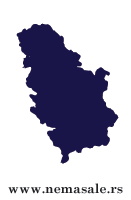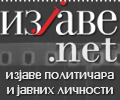| NSPM in English | |||
Criminal Kosovo: America’s Gift to Europe |
 |
 |
 |
| среда, 12. јануар 2011. | |
|
(January 10, 2011)
U.S. media have given more attention to hearsay allegations of Julian Assange’s sexual encounters with two talkative Swedish women than to an official report accusing Kosovo prime minister Hashim Thaci of running a criminal enterprise which, among almost every other crime in the book, has murdered prisoners in order to sell their vital organs on the world market. The report by Swiss liberal Dick Marty was mandated two years ago by the Parliamentary Assembly of the Council of Europe (PACE). Not to be confused with the European Union, the Council of Europe was founded in 1949 to promote human rights, the rule of law and democracy and has 47 member states (compared to 27 in the EU). While U.S. legal experts feverishly try to trump up charges they can use to demand extradition of Assange to the United States, to be duly punished for discomfiting the empire, U.S. State Department spokesman Phillip Crowley piously reacted to the Council of Europe allegations by declaring that the United States will continue to work with Thaci since “any individual anywhere in the world is innocent until proven otherwise”. Everyone, that is, except, among others, Bradley Manning who is in solitary confinement although he has not been found guilty of anything. All the Guantanamo prisoners have been considered guilty, period. The United States is applying the death penalty on a daily basis to men, women and children in Afghanistan and Pakistan who are innocent until proven dead. Embarrassed supporters of Thaci’s little self-proclaimed state dismiss the accusations by saying that the Marty Report does not prove Thaci’s guilt. Of course it doesn’t. It can’t. It is a report, not a trial. The report was mandated by the PACE precisely because judicial authorities were ignoring evidence of serious crimes. In her 2008 memoir in Italian La caccia. Io e i criminali di guerra (The Hunt. Me and the War Criminals), the former prosecutor at the International Criminal Tribunal for former Yugoslavia (ICTY) in The Hague, Carla del Ponte, complained that she had been prevented from carrying out a thorough investigation of reports of organ extraction from Serb and other prisoners carried out by the “Kosovo Liberation Army (KLA)” in Albania. Indeed, rumors and reports of those atrocities, carried out in the months following the occupation of Kosovo by NATO-led occupation forces, have been studiously ignored by all relevant judicial authorities. The Marty report claims to have uncovered corroborating evidence, including testimony by witnesses whose lives would be in danger if their names were revealed. The conclusion of the report is not and could not be a verdict, but a demand to competent authorities to undertake judicial proceedings capable of hearing all the evidence and issuing a verdict. Skepticism about atrocities It is always prudent to be skeptical about atrocity stories circulating in wartime. History shows many examples of totally invented atrocity stories that serve to stir up hatred of the enemy during wartime, such as the widely circulated World War I reports of the Germans “cutting off the hands of Belgian babies”. Western journalists and politicians abandoned all prudent skepticism regarding the wild tales that were spread of Serb atrocities used to justify the 1999 NATO bombing of Serbia. Personally, my skepticism extends to all such stories, regardless of the identity of the alleged perpetrators, and I have refrained for years from writing about the Albanian organ transplant stories for that reason. I never considered Carla del Ponte a reliable source, but rather a gullible and self-aggrandizing woman who had been selected by the U.S. sponsors of the ICTY because they thought they could manipulate her. No doubt the sponsors of the Tribunal she was working for, which was set up by and for the United States and NATO allies in order to justify their choice of sides in the Yugoslav civil wars, would have called a halt before she could stray from her assigned path to stick her nose into crimes committed by America’s Albanian protégés. But that does not prove that the alleged crimes actually were committed. However, the Marty report goes beyond vague rumors to make specific allegations against the KLA’s “Drenica group” led by Hashim Thaci. Despite refusal of Albanian authorities to cooperate, there is ample proof that the KLA operated a chain of “safe houses” on Albanian territory during and after the 1999 NATO war against Serbia, using them to hold, interrogate, torture and sometimes murder prisoners. One of these safe houses, belonging to a family identified by the initial “K”, was cited by Carla del Ponte and media reports as “the yellow house” (since painted white). To quote the Marty Report (paragraph 147): “There are substantial elements of proof that a small number of KLA captives, including some of the abducted ethnic Serbs, met their death in Rripe, at or in the vicinity of the K. house. We have learned about these deaths not only through the testimonies of former KLA soldiers who said they had participated in detaining and transporting the captives while they were alive, but also through the testimonies of persons who independently witnessed the burial, disinterment, movement and reburial of the captives’ corpses (…)” An undetermined but apparently small number of prisoners were transferred in vans and trucks to an operating site near Tirana international airport, from which fresh organs could be flown rapidly to recipients. “The drivers of these vans and trucks – several of whom would become crucial witnesses to the patterns of abuse described – saw and heard captives suffering greatly during the transports, notably due to the lack of a proper air supply in their compartment of the vehicle, or due to the psychological torment of the fate that they supposed awaited them” (paragraph 155). Captives described in the report as “victims of organised crime” included “persons whom we found were taken into central Albania to be murdered immediately before having their kidneys removed in a makeshift operating clinic” (paragraph 156). These captives “undoubtedly endured a most horrifying ordeal in the custody of their KLA captors. According to source testimonies, the captives ‘filtered’ into this final subset were initially kept alive, fed well and allowed to sleep, and treated with relative restraint by KLA guards and henchmen who would otherwise have beaten them up indiscriminately” (paragraph 157). “The testimonies on which we based our findings spoke credibly and consistently of a methodology by which all of the captives were killed, usually by a gunshot to the head, before being operated on to remove one or more of their organs. We learned that this was principally a trade in ‘cadaver kidneys’, i.e. the kidneys were extracted posthumously; it was not a set of advanced surgical procedures requiring controlled clinical conditions and, for example, the extensive use of anaesthetic” (paragraph 162). Skepticism about “liberation” The Marty report also recalls what is common knowledge in Europe, namely that Hashim Thaci and his “Drenica Group” are notorious criminals. While “liberated” Kosovo sinks ever further into poverty, they have amassed fortunes in various aspects of illicit trade, notably enslaving women for prostitution and controlling illegal narcotics across Europe. “Notably, in confidential reports spanning more than a decade, agencies dedicated to combating drug smuggling in at least five countries have named Hashim Thaci and other members of his “Drenica Group” as having exerted violent control over the trade in heroin and other narcotics” (paragraph 66). “Similarly, intelligence analysts working for NATO, as well as those in the service of at least four independent foreign Governments, made compelling findings through their intelligence-gathering related to the immediate aftermath of the conflict in 1999. Thaci was commonly identified, and cited in secret intelligence reports, as the most dangerous of the KLA’s ‘criminal bosses’” (paragraph 67). The leftists who fell hook, line and sinker for the “war to rescue the Kosovars from genocide” propaganda that justified NATO’s debut as aggressive bomber/invader in 1999 readily accepted the identification of the “Kosovo Liberation Army” as a national liberation movement deserving their support. Isn’t it part of romantic legend for revolutionaries to rob banks for their cause? Leftists assume such criminal activities are merely a means to the end of political independence. But what if political independence is in reality the means to sanctuarize criminal activities? Assassinating policemen, the KLA specialty prior to being given Kosovo by NATO, is an ambiguous activity. Is the target “political oppression”, as claimed, or simply law enforcement? What have Thaci and company done with their “liberation”? First of all, they allowed their American sponsors to build a huge military base, Camp Bondsteel, on Kosovo territory, without asking permission from anyone. Then, behind a smokescreen of talk of building democracy, they have terrorized ethnic minorities, eliminated their political rivals, fostered rampant crime and corruption, engaged in electoral fraud, and ostentatiously enriched themselves thanks to the criminal activities that constitute the real economy. The Marty Report recalls what happened when Yugoslav president Slobodan Milosevic, under NATO threat of wiping out his country, agreed to withdraw from Kosovo and allow a U.N. force called KFOR (quickly taken over by NATO) to occupy Kosovo. “First, the withdrawal of the Serb security forces from Kosovo had ceded into the hands of various KLA splinter groups, including Thaci’s “Drenica Group”, effectively unfettered control of an expanded territorial area in which to carry out various forms of smuggling and trafficking” (paragraph 84). “KFOR and UNMIK were incapable of administering Kosovo’s law enforcement, movement of peoples, or border control, in the aftermath of the NATO bombardment in 1999. KLA factions and splinter groups that had control of distinct areas of Kosovo (villages, stretches of road, sometimes even individual buildings) were able to run organised criminal enterprises almost at will, including in disposing of the trophies of their perceived victory over the Serbs” (paragraph 85). “Second, Thaci’s acquisition of a greater degree of political authority (Thaci having appointed himself Prime Minister of the Provisional Government of Kosovo) had seemingly emboldened the “Drenica Group” to strike out all the more aggressively at perceived rivals, traitors, and persons suspected of being “collaborators” with the Serbs” (paragraph 86). In short, NATO drove out the existing police, turning the province of Kosovo over to violent gangsters. But this was not an accident. Hashim Thaci was not just a gangster who took advantage of the situation. He had been hand-picked by U.S. Secretary of State Madeleine Albright and her right-hand man, James Rubin, for the job. “You ought to be in movies…”
Ms Albright was eager to use the ethnic conflict in Kosovo to make a display of U.S. military might by bombing the Serbs, in order to reassert U.S. dominance of Europe via NATO. But some European NATO country leaders thought it politically necessary to make at least a pretense of seeking a negotiated solution to the Kosovo problem before bombing. And so a fake “negotiation” was staged at Rambouillet, designed by the United States to get the Serbs to say no to an impossible ultimatum, in order to claim that the humanitarian West had no choice but to bomb. For that, they needed a Kosovo Albanian who would play their game. Belgrade sent a large multi-ethnic delegation to Rambouillet, ready to propose a settlement giving Kosovo broad autonomy. On the other side was a purely ethnic Albanian delegation from Kosovo including several leading local intellectuals experienced in such negotiations, including the internationally recognized leader of the Albanian separatist movement in Kosovo, Ibrahim Rugova who, it was assumed, would lead the “Kosovar” delgation. But to the general surprise of observers, the seasoned intellectuals were shoved aside, and leadership of the delegation was taken over by a young man, Hashim Thaci, known in law-enforcement circles as “the Snake”. The American stage-managers chose Thaci for obvious reasons. While the older Kosovo Albanians risked actually negotiating with the Serbs, and thus reaching an agreement that would prevent war, Thaci owed everything to the United States, and would do as he was told. Moreover, putting a “wanted” criminal at the top of the delegation was an affront to the Serbs that would help scuttle negotiations. And finally, the Thaci image appealed to the Americans’ idea of what a “freedom fighter” should look like. Albright’s closest aide, James Rubin, acted as talent scout, gushing over Thaci’s good looks, telling him he was so handsome he should be in Hollywood. Indeed, Thaci did not look like a Hollywood gangster, Edward G. Robinson style, but a clean-cut hero with a vague resemblance to the actor Robert Stack. Joe Biden is said to have complained that Madeleine Albright was “in love” with Thaci. Image is everything, after all, especially when the United States is casting its own Pentagon superproduction, “Saving the Kosovars”, in order to redesign the Balkans, with its own “independent” satellite states. The pretext for the 1999 war was to “save the Kosovars” (the name assumed by the Albanian population of that Serbian province, to give the impression that it was a country and that they were the rightful inhabitants) from an imaginary threat of “genocide”. The official U.S. position was to respect the territorial integrity of Yugoslavia. But it was always quite obvious that behind the scenes, the United States had made a deal with Thaci to give him Kosovo as part of the destruction of Yugoslavia and the crippling of Serbia. The chaos that followed the withdrawal of Yugoslav security forces enabled the KLA gangs to take over and the United States to build Camp Bondsteel. Cheered on by a virulent Albanian lobby in the United States, Washington has defied international law, violated its own commitments (the agreement ending the 1999 war called for Serbia to police Kosovo’s borders, which was never allowed), and ignored muted objections from European allies to sponsor the transformation of the poor Serbian province into an ethnic Albanian “independent state”. Since unilaterally declaring independence in February 2008, the failed statelet has been recognized only by 72 American out of 192 U.N. members, including 22 of the European Union’s 27 members. EULEX versus Clan Loyalty A few months later, the European Union set up a “European Union Rule of Law Mission in Kosovo” (EULEX) intended to take over judicial authority in the province from the United Nations Mission in Kosovo (UNMIK) that had ostensibly exercised such functions after NATO drove out the Serbs. The very establishment of EULEX was proof that the EU’s recognition of Kosovo’s independence was unjustified and dishonest. It was an admission that Kosovo, after being delivered to KLA bands (some in war against each other), was unable to provide even a semblance of law and order, and thus in no way prepared to be “an independent state”. Of course the West will never admit this, but it was the complaints of the Serb minority in the 1980s that they could not count on protection by police or law courts, then run by the majority ethnic Albanian communist party, that led to the Serbian government’s limitation of Kosovo’s autonomy, portrayed in the West as a gratuitous persecution motivated by racial hatred of Hitlerian proportions. The difficulties of obtaining justice in Kosovo are basically the same now as they were then – with the difference that the Serbian police understood the Albanian language, whereas the UNMIK and EULEX internationals are almost entirely dependent on local Albanian interpreters, whose veracity they are unable to check. The Marty Report describes the difficulties of crime investigation in Kosovo: “The structure of Kosovar Albanian society, still very much clan orientated, and the absence of a true civil society have made it extremely difficult to set up contacts with local sources. This is compounded by fear, often to the point of genuine terror, which we have observed in some of our informants immediately upon broaching the subject of our inquiry. “The entrenched sense of loyalty to one’s clansmen, and the concept of honour … rendered most ethnic Albanian witnesses unreachable for us. Having seen two prominent prosecutions undertaken by the ICTY leading to the deaths of so many witnesses, and ultimately a failure to deliver justice16, a Parliamentary Assembly Rapporteur with only paltry resources in comparison was hardly likely to overturn the odds of such witnesses speaking to us directly. “Numerous persons who have worked for many years in Kosovo, and who have become among the most respected commentators on justice in the region, counseled us that organized criminal networks of Albanians (‘the Albanian mafia’) in Albania itself, in neighbouring territories including Kosovo and ‘the former Yugoslav Republic of Macedonia’, and in the Diaspora, were probably more difficult to penetrate than the Cosa Nostra; even low-level operatives would rather take a jail term of decades, or a conviction for contempt, than turn in their clansmen.” A second report submitted this month to the Council of Europe by rapporteur Jean-Charles Gardetto on witness protection in war crimes trials for former Yugoslavia notes that there is no witness protection law in Kosovo and, more seriously, no way to protect witnesses that might testify against fellow ethnic Albanians. “In the most serious cases, witnesses are able to testify anonymously. However, it was made clear to the rapporteur that these measures are useless as long as the witness is physically in Kosovo, where everybody knows everybody else. Most witnesses are immediately recognised by the defence when they deliver their testimony, despite all the anonymity measures.” “There are many limitations to the protection arrangements currently available, not least because Kosovo has a population of less than two million with very tight-knit communities. Witnesses are often perceived as betraying their community when they give evidence, which inhibits possible witnesses from coming forward. Furthermore, many people do not believe that they have a moral or legal duty to testify as a witness in criminal cases. “Moreover, when a witness does come forward, there is a real threat of retaliation. This may not necessarily put them in direct danger, losing their job for example, but there are also examples of key witnesses being murdered. The trial of Ramush Haradinaj, the former leader of the Kosovo Liberation Army, well illustrates this. Mr. Haradinaj was indicted by the ICTY for crimes committed during the war in Kosovo but was subsequently acquitted. In its judgment, the Tribunal highlighted the difficulties that it had had in obtaining evidence from the 100 prosecution witnesses. Thirty-four of them were granted protection measures and 18 had to be issued with summonses. A number of witnesses who were going to give evidence at the trial were murdered. These included Sadik and Vesel Muriqi, both of whom had been placed under a protection program by the ICTY.” Europe’s Dilemma Naturally, European accomplices in putting the Thaci gang in charge of Kosovo have been quick to dismiss the Marty report. Tony Blair apologist and former Labour minister Dennis MacShane wrote in The Independent (UK) that, “There is not one single name or a single witness to the allegations that Thaci was involved in the harvesting of human organs from murdered victims.” To someone unfamiliar with the circumstances and with the report, that may sound like a valid objection.But Marty has made it clear that he can supply names of witnesses to competent judicial authorities. Thaci himself acknowledged that they exist when he stated that he would publish the names of Marty’s witnesses – a statement understood as a death threat by those familiar with the Pristina scene. One of the most prominent Europeans to hope that the Marty report will disappear is the French media humanitarian Bernard Kouchner, until recently Sarkozy’s foreign minister, who officially ran Kosovo as the first head of UNMIK after the NATO occupation. Contrary to Kouchner’s protests of ignorance, the UNMIK police chief in 2000 and 2001, Canadian Captain Stu Kellock, has called it “impossible” that Kouchner was not aware of organized crime in Kosovo. The first time a reporter queried Kouchner about the organ transplant accusations, a few months ago, Kouchner responded with a loud horse laugh, before telling the reporter to go have his head examined. After the Marty report, Kouchner merely repeated his “skepticism”, and called for an investigation… by EULEX. Other NATO have defenders have taken the same line. One investigation calls for another, and so on. Investigating the charges against the KLA is beginning to look like the Middle East peace process. The Marty Report itself concludes with a clear call on EULEX to “to persevere with its investigative work, without taking any account of the offices held by possible suspects or of the origin of the victims, doing everything to cast light on the criminal disappearances, the indications of organ trafficking, corruption and the collusion so often complained of between organized criminal groups and political circles” and “to take every measure necessary to ensure effective protection for witnesses and to gain their trust”. This is a tall order, considering that EULEX is ultimately dependent on EU governments deeply involved in ignoring Kosovo Albanian crime for over a decade. Still, some of the most implicated personalities, such as Kouchner, are nearing the end of their careers, and there are many Europeans who consider that things have gone much too far, and that the Kosovo cesspool must be cleaned up. EULEX is already prosecuting an organ trafficking ring in Kosovo. In November 2008, a young Turkish man who had just had a kidney removed collapsed at Pristina airport, which led police to raid the nearby Medicus clinic where a 74-year-old Israeli was convalescing from implantation of the young man’s kidney. The Israeli had allegedly paid 90,000 euros for the illegal implant, while the young Turk, like other desperately poor foreigners lured to Pristina by false promises, was cheated of the money promised. The trial is currently underway in Pristina of seven defendants charged with involvement in the illegal Medicus organ trafficking racket, including top members of the Kosovo Albanian medical profession. Still at large are Dr. Yusuf Sonmez, a notorious international organ trafficker, and Moshe Harel, an Israeli of Turkish origin accused of organizing the illicit international organ trade. Israel is known to be a prime market for organs because of Jewish religious restrictions that severely limit the number of Israeli donors. The Marty Report notes that the information it has obtained “appears to depict a broader, more complex organized criminal conspiracy to source human organs for illicit transplant, involving co-conspirators in at least three different foreign countries besides Kosovo, enduring over more than a decade. In particular, we found a number of credible, convergent indications that the organ-trafficking component of the post-conflict detentions described in our report is closely related to the contemporary case of the Medicus Clinic, not least through prominent Kosovar Albanian and international personalities who feature as co-conspirators in both.” But EULEX prosecution of the Medicus case does not automatically mean that the European judicial authorities in Kosovo will pursue the even more criminal organ trafficking denounced in the Marty Report. One obstacle is that the alleged crimes took place on the territory of Albania, and so far Albanian authorities have been uncooperative, to say the least. A second inhibition is fear that the attempt to prosecute leading KLA figures would lead to unrest. Indeed, on January 9, several hundred Albanians carrying Albanian flags (not the Western-imposed flag of Kosovo) demonstrated in Mitrovica against the Marty report shouting “UCK, UCK” (KLA in Albanian). Still, EULEX has indicted two former KLA commanders for war crimes committed on Albanian territory in 1999 when they allegedly tortured prisoners, ethnic Albanians from Kosovo either suspected of “collaborating” with legal Serb authorities or because they were political opponents of the KLA. A striking and significant political fact that emerges from the Marty report is that: “The reality is that the most significant operational activities undertaken by members of the KLA – prior to, during, and in the immediate aftermath of the conflict – took place on the territory of Albania, where the Serb security forces were never deployed” (paragraph 36). Thus, to a very large extent, the Serbian province of Kosovo was the object of a foreign invasion from across its border, by Albanian nationalists keen on creating “Greater Albania”, and aided in this endeavor by diaspora lobbies and, decisively, NATO bombing. Far from being an “aggressor” in its own historic province, Serbia was the victim of a major two-pronged foreign invasion. America’s disposable puppets NATO could not have waged a ground war against Serbian forces without suffering casualties. So it waged a 78-day air war, ravaging Serbia’s infrastructure. To save his country from threatened annihilation, Milosevic gave in. For its ground force, the United States chose the KLA. The KLA was no match for Serbian forces on the ground, but it aided the United States/NATO war in peculiar ways. The United States provided KLA fighters on the ground with GPS devices and satellite telephones to enable them to spot Serb targets for bombing (very inefficiently, as the NATO bombs missed almost all their military targets). The KLA in some places ordered Kosovo Albanian civilians to flee across the border to Albania or to ethnic Albanian parts of Macedonia, where photographers were waiting to enrich the imagery of a population persecuted by Serb “ethnic cleansing” – an enormous propaganda success. And crucially, before the NATO bombing, the KLA pursued a strategy of provocation, murdering policemen and civilians, including disobedient Albanians, designed to commit acts of repression that could be used as a pretext for NATO intervention. Thaci even boasted subsequently of the success of this strategy. Thaci has played the role assigned to him by the empire. Still, considering the history of American disposal of collaborators who have outlived their usefulness (Ngo Dinh Diem, Noriega, Saddam Hussein…), he has reasons to be uneasy. Thaci’s uneasiness could be sharpened by a recent trip to the region by William Walker, the U.S. agent who in 1999 created the main pretext for the NATO bombing campaign by inflating casualties from a battle between Serb police and KLA fighters in the village of Racak into a massacre of civilians, “a crime against humanity” perpetrated by “people with no value for human life”. Walker, whose main professional experience was in Central America during the Reagan administration’s bloody fight against revolutionary movements in Nicaragua and El Salvador, had been imposed by the United States as head of a European mission ostensibly mandated to monitor a cease-fire between Serb forces and the KLA. But in fact, he and his British deputy used the mission to establish close contacts with the KLA in preparation for joint war against the Serbs. The grateful gangster regime has named a street in Pristina after him; In between receiving a decoration in Kosovo and honorary citizenship in Albania, Walker took political positions that could make both Thaci and EULEX nervous. Walker expressed support for Albin Kurti, the young leader of the radical nationalist “Self-Determination” movement (Vetëvendosje), which is gaining support with its advocacy of independence from EU governance as well as in favor of “natural Albania”, meaning a Greater Albania composed of Albania, Kosovo and parts of southern Serbia, much of Macedonia, a piece of Montenegro and even northern Greece. Was Walker on a talent-scouting mission in view of replacing the increasingly disgraced Thaci? If Kurti is the new favorite, a U.S.-chosen replacement could cause even more trouble in the troubled Balkans. The West, that is, the United States, the European Union and NATO may be able to agree on a “curse on both their houses” approach, concluding that the Serbs they persecuted and the Albanians they helped are all barbarians, unworthy of their benevolent intervention. What they will never admit is that they chose, and to a large extent created, the wrong side in a war for which they bear criminal responsibility. And whose devastating consequences continue to be borne by the unfortunate inhabitants of the region, whatever their linguistic and cultural identity. Diana Johnstone is author of Fools’ Crusade: Yugoslavia, NATO and Western Delusions. She can be reached at Ова адреса ел.поште заштићена је од спам напада, треба омогућити ЈаваСкрипт да бисте је видели |
Од истог аутора
- The Good Intentions That Pave the Road to War
- The Yugoslav wars of disintegration: Graveyard Humor in Belgrade
- Weep Not for Strauss-Kahn
- Why are we making war against Libya - Real and False Reasons
- Libya: Is This Kosovo All Over Again?
- The Culture of Impunity, NATO Style
- Richard Holbrooke, 1941-2010, Opportunist Extraordinary
- Encircling Russia, Targeting China
- Nice Guys Finish Last
- Serbia Surrenders to the EU
- Breaking Yugoslavia
- NATO's Kosovo kolony
Остали чланци у рубрици
- Playing With Fire in Ukraine
- Kosovo as a res extra commercium and the alchemy of colonization
- The Balkans XX years after NATO aggression: the case of the Republic of Srpska – past, present and future
- Из архиве - Remarks Before the Foreign Affairs Committee of the European Parliament
- Dysfunction in the Balkans - Can the Post-Yugoslav Settlement Survive?
- Serbia’s latest would-be savior is a modernizer, a strongman - or both
- Why the Ukraine Crisis Is the West’s Fault
- The Ghosts of World War I Circle over Ukraine
- Nato's action plan in Ukraine is right out of Dr Strangelove
- Why Yanukovych Said No to Europe

.jpg)
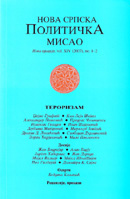
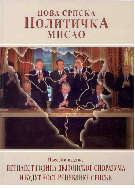
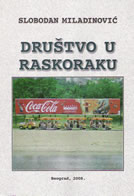
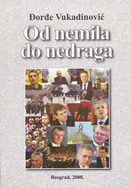
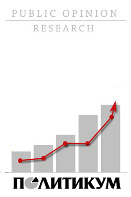
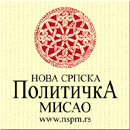



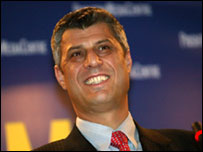 Until February 1999, Hashim Thaci’s only claim to fame was in Serbian police records, where he was wanted for various violent crimes. Then suddenly, at a French chateau called Rambouillet, he was thrust into the world spotlight by his American handlers. It is one of the most bizarre twists to the whole tragi-comic Kosovo saga.
Until February 1999, Hashim Thaci’s only claim to fame was in Serbian police records, where he was wanted for various violent crimes. Then suddenly, at a French chateau called Rambouillet, he was thrust into the world spotlight by his American handlers. It is one of the most bizarre twists to the whole tragi-comic Kosovo saga.
